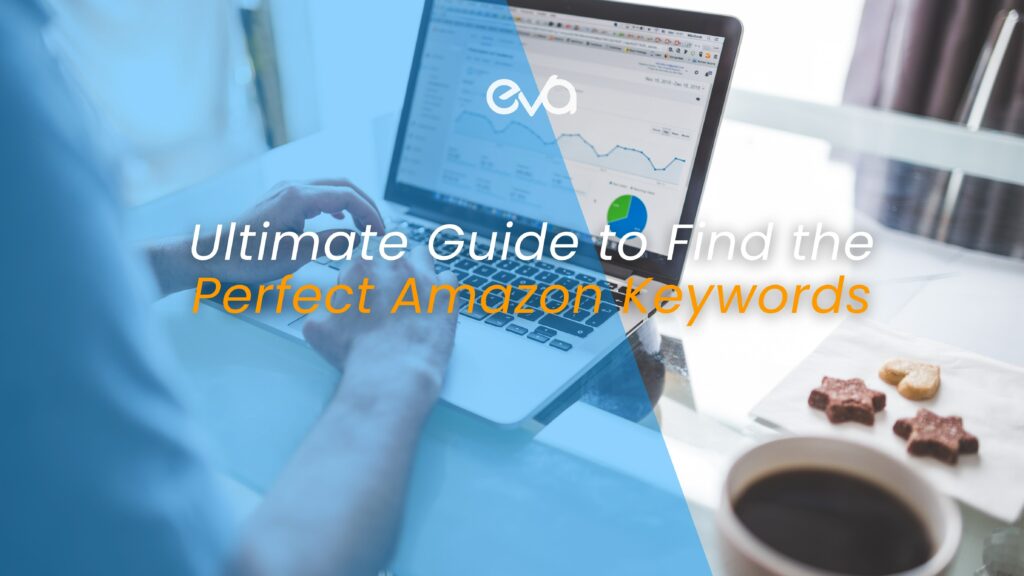As an Amazon seller, finding the perfect keywords is crucial for ensuring your products are discoverable by potential customers. With so many products on Amazon, effective keyword optimization can make all the difference in driving traffic to your listing and increasing sales.
However, keyword research can be a daunting task, and it’s essential to understand how Amazon’s A10 algorithm works to optimize your listing effectively. In this ultimate guide, I’ll provide a step-by-step approach to finding the perfect Amazon keywords to increase your product’s visibility and sales on the platform.
Table of Contents
Why Are Amazon Keywords So Important?
Amazon keywords are the words and phrases customers type into the search bar when looking for a product on the platform. Optimizing your listing with relevant and high-performing keywords is crucial for increasing the visibility of your product and driving traffic to your listing.
Using the right keywords can improve your chances of appearing on the first page of search results, where most customers tend to browse and make their purchase decisions. Additionally, using targeted keywords can help you attract the right audience and increase your conversion rates.
About Amazon A10 Algorithm
Amazon’s A10 algorithm is a complex system that determines which products to display in search results based on various factors. This algorithm considers the product’s relevance to the search query, the quality of the product, and the customer’s past purchasing behavior. Additionally, the A10 algorithm considers the level of competition for a particular search term, including the number of sellers offering similar products and their product’s performance.
The A10 algorithm also considers the product’s conversion rates, customer reviews, and other factors contributing to customer satisfaction. By understanding how the A10 algorithm works, sellers can optimize their listings with relevant and high-performing keywords to improve their chances of ranking higher in search results and attracting more customers to their listings.
Keywords play a crucial role in the Amazon A10 algorithm, as they are the primary way customers search for products on the platform. Amazon uses an algorithmic process to match customer queries with relevant keywords in product listings. Therefore, using relevant and high-performing keywords in your listing is essential to ensure your products are shown to potential customers. The A10 algorithm evaluates the relevance and quality of your keywords to determine the ranking of your listing in search results.

Discover How To Supercharge Your Profits From Amazon & Beyond
Tech – unlock more revenue, increase efficiency & maximize profitability with integrated AI solutions
Agency Services – our ex-Amazonian team provides key insights, expertise & handles everything for you from A-Z
3PL Fulfillment Solutions – real-time inventory management connected to Eva tech across Amazon marketplaces
Conducting Keyword Research
Tools for keyword research:
- Google Keyword Planner is a great starting point for keyword research, especially if you’re new to SEO. It can help you identify new keywords and provides data on monthly search volume, competition, and suggested bids for Google Ads. However, keep in mind that the data can be imprecise and the tool is more geared toward paid search.
- SEMrush is a comprehensive SEO tool that offers keyword research and insights into competitors’ keywords, backlinks, and content. It offers paid and organic search data and can help you identify long-tail and related keywords to optimize your content.
- Ahrefs is another popular SEO tool that offers keyword research, site auditing, and backlink analysis. It comprehensively overviews keyword difficulty, search volume, and click-through rates. It’s also helpful in analyzing competitors’ keywords and backlinks.
- Moz Keyword Explorer is an excellent tool for identifying new keyword opportunities and analyzing the potential of existing keywords. It offers data on organic click-through rates, priority scores, and competitive keyword analysis.
Brainstorming Relevant Keywords
- Consider the different stages of the buyer’s journey when thinking about your target audience and their search intent. For example, someone just starting to research a product may use broad keywords, while someone ready to make a purchase may use more specific keywords.
- Use Google autocomplete to see what suggestions come up as you type in relevant keywords. This can provide ideas for long-tail keywords and related phrases.
- Forums, social media, and customer reviews can be a great sources of information for identifying keywords relevant to your audience. Look for common phrases or questions that come up often.
- Industry publications and blogs can help you identify trending or popular keywords in your industry. They can also provide ideas for content that will appeal to your target audience.
Analyzing Competitor Keywords
- When analyzing competitor keywords, it’s important to focus on those relevant to your business and audience. Don’t just copy your competitors’ keywords without considering their relevance and potential.
- Look at the content on your competitor’s websites to see which keywords they are using in their titles, headings, and meta descriptions. This can give you an idea of what topics they are focusing on.
- Google search can provide insights into which keywords your competitors are ranking for. Use search operators like “site:competitor.com” to see which pages are ranking for specific keywords.
Narrowing Down Your Keyword List
- Evaluate the relevance: Review each keyword and assess its relevance to your business, products or services, and target audience. Remove any keywords that are not relevant or not specific enough.
- Check search volume and competition: Use tools such as Google Keyword Planner or SEMrush to evaluate each keyword’s search volume and competition. Focus on keywords with higher search volume and lower competition.
- Analyze user intent: Understand the intent behind each keyword and group them accordingly. Some keywords may be transactional, while others may be informational. Categorizing them based on intent can help you develop a more targeted and effective SEO strategy.
- Prioritize keywords: Prioritize your keywords based on their potential impact and importance to your business. Consider each keyword’s relevance, search volume, competition, user intent, and conversion potential to determine its priority.
- Monitor and adjust: Keep track of your keyword performance over time and adjust as needed. If certain keywords are not driving traffic or conversions, consider replacing them with more effective ones.
Optimize Your Listing with Keywords
Optimizing your listing with keywords is essential to creating a successful e-commerce strategy. Here are some best practices for incorporating keywords into your listing:
How to Incorporate Keywords into Your Listing
- Research relevant keywords: Before optimizing your listing, research relevant keywords that customers use to search for your products. Use tools such as Google Keyword Planner or SEMrush to find keywords with high search volume and low competition.
- Prioritize high-impact keywords: Focus on incorporating high-impact keywords into your listing, such as those with high search volume and purchase intent.
Best Practices for Using Keywords
- Title: Your product title is the essential element for keyword optimization. Include the most critical keywords in the title while keeping it clear and concise. Avoid keyword stuffing, which can negatively impact your search rankings.
- Bullet points: Use bullet points to highlight your product’s key features and benefits, and include relevant keywords where appropriate. Make sure your bullet points are easy to read and clearly communicate the value of your product.
- Description: Use your product description to provide more detail about your product and its benefits. Include additional relevant keywords where appropriate, but avoid overusing them. Write a compelling and informative description that helps customers understand why they should purchase your product.
Utilizing Amazon Backend Keywords
Backend keywords are hidden keywords that are not visible to customers but are used by Amazon’s search algorithm to help match your product with relevant search queries. To add backend keywords to your listing, go to the “Keywords” section of your product listing and enter up to 250 bytes of relevant keywords not already included in your title, bullet points, or product description.
It’s important to follow best practices for using backend keywords, such as avoiding repetitive or irrelevant keywords and using a mix of long-tail and broad keywords. It’s also important to regularly monitor and update your backend keywords to ensure they are still relevant and effective.
Conclusion
keyword research is a critical component of any successful SEO strategy. Using tools for keyword research, brainstorming relevant keywords, and analyzing competitor keywords, you can create a focused and effective set of keywords that will help drive traffic and conversions to your website or Amazon listing.
Remember to narrow down your keyword list by evaluating relevance, search volume, competition, user intent, and conversion potential, and prioritize keywords accordingly. Finally, don’t forget to regularly monitor and update your keyword strategy to ensure it remains effective over time.
If you want to level up your visibility on Amazon, we invite you to schedule a free consultation with Eva, our experienced Amazon marketing expert. She can help you optimize your product listing, improve your search rankings, and drive more sales on Amazon. So don’t wait – book your free consultation today and take your Amazon sales to the next level!








